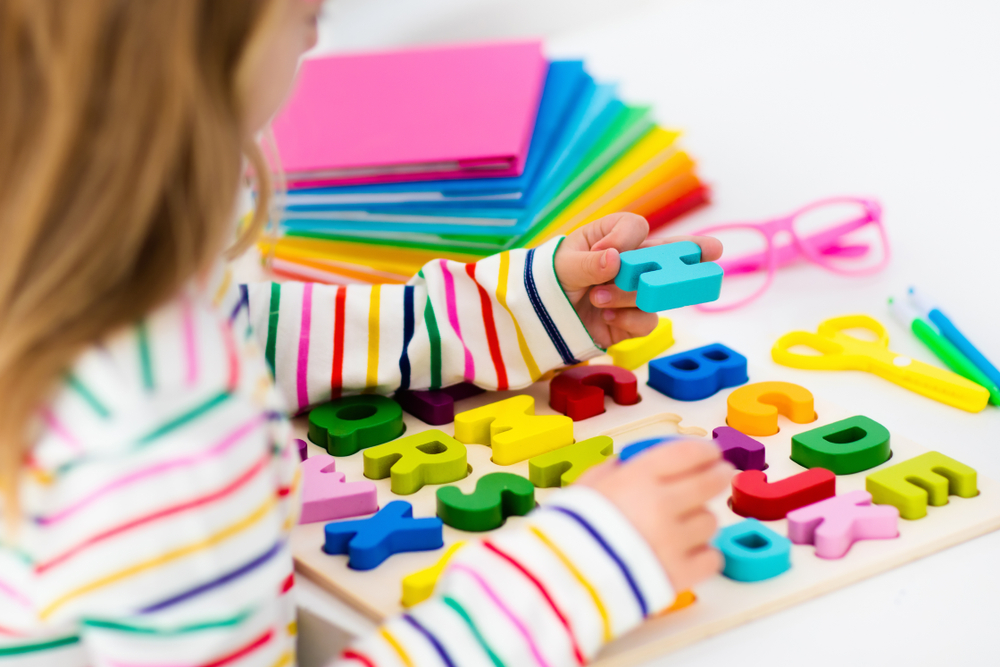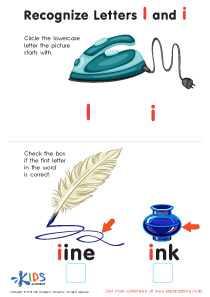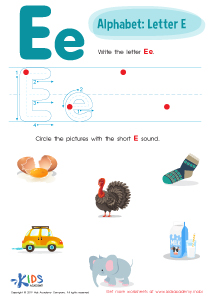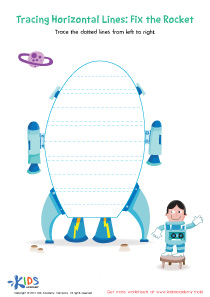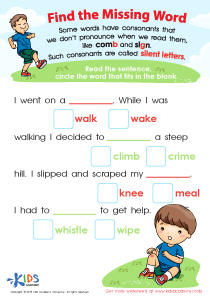Visual discrimination Normal Upper & Lowercase Letters Worksheets for 4-Year-Olds
4 filtered results
-
From - To
Enhance your child's reading readiness with our Visual Discrimination Normal Upper & Lowercase Letters Worksheets designed for 4-year-olds. These engaging, printable activities help young learners distinguish between upper and lowercase letters, boosting letter recognition and early literacy skills. Each worksheet is crafted to support visual discrimination development through fun, interactive exercises that capture your child's interest. Perfect for at-home learning or classroom use, these worksheets provide a solid foundation for future reading success. Visit our website to download and watch your child master the alphabet while enjoying the process! Suitable for preschoolers.
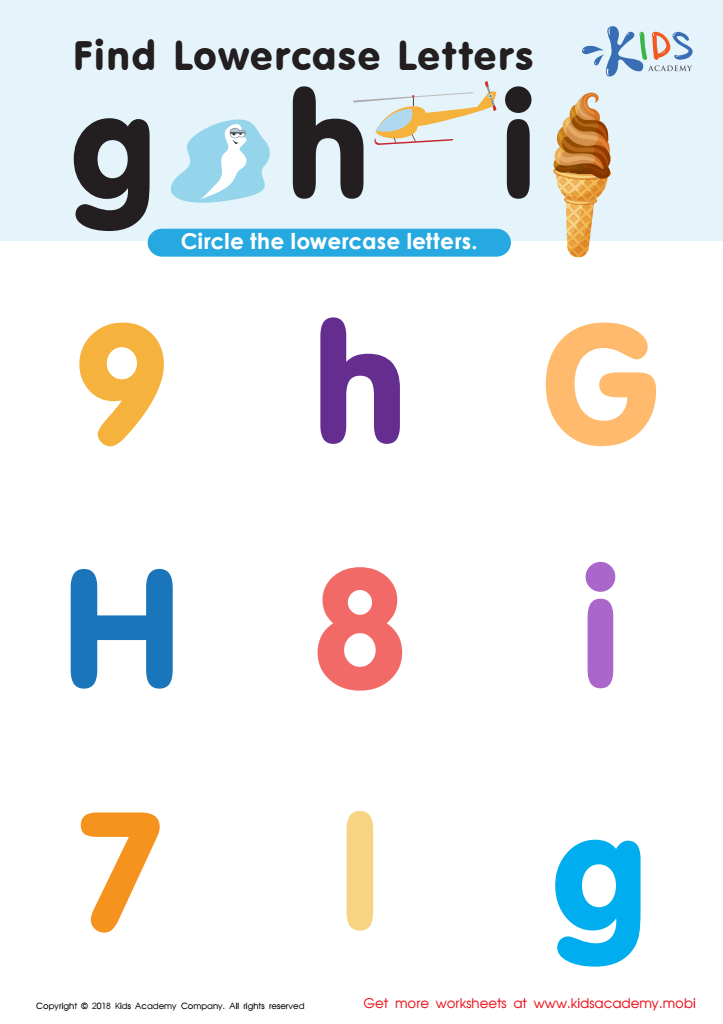

Find Lowercase Letters g h i Worksheet
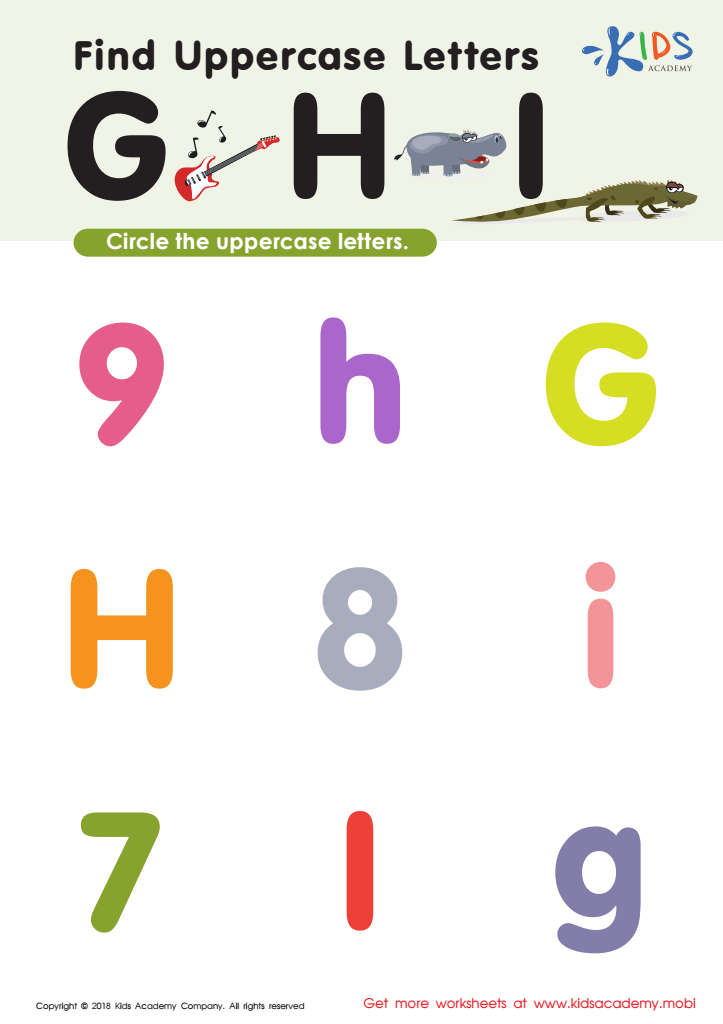

Find Uppercase Letters G, H, and I Worksheet
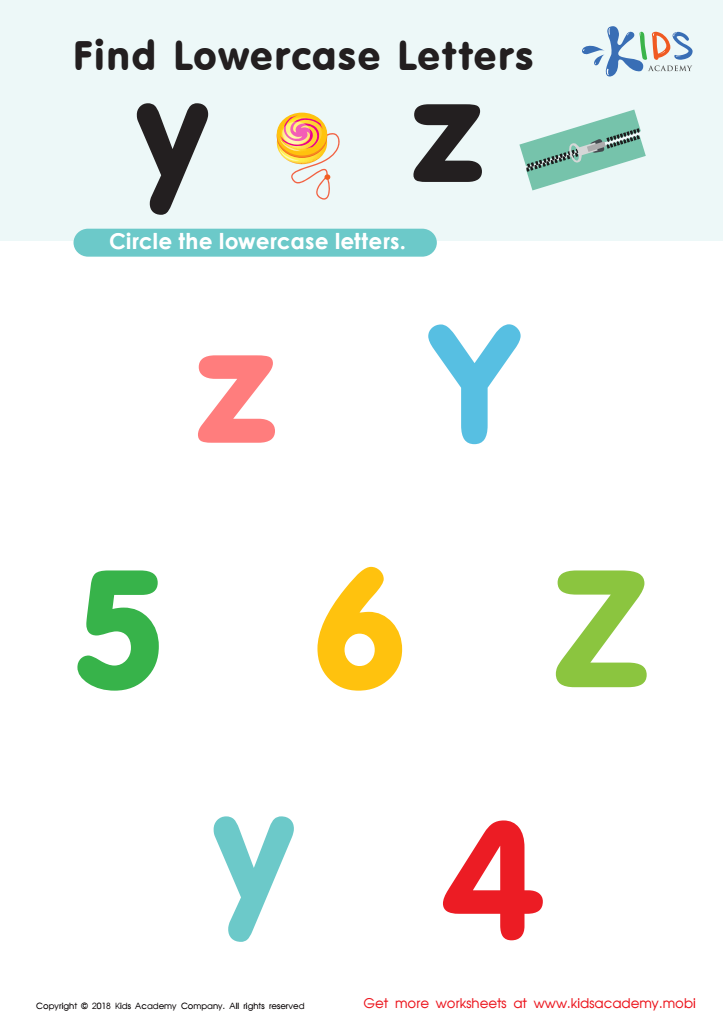

Find Lowercase Letters y z Worksheet
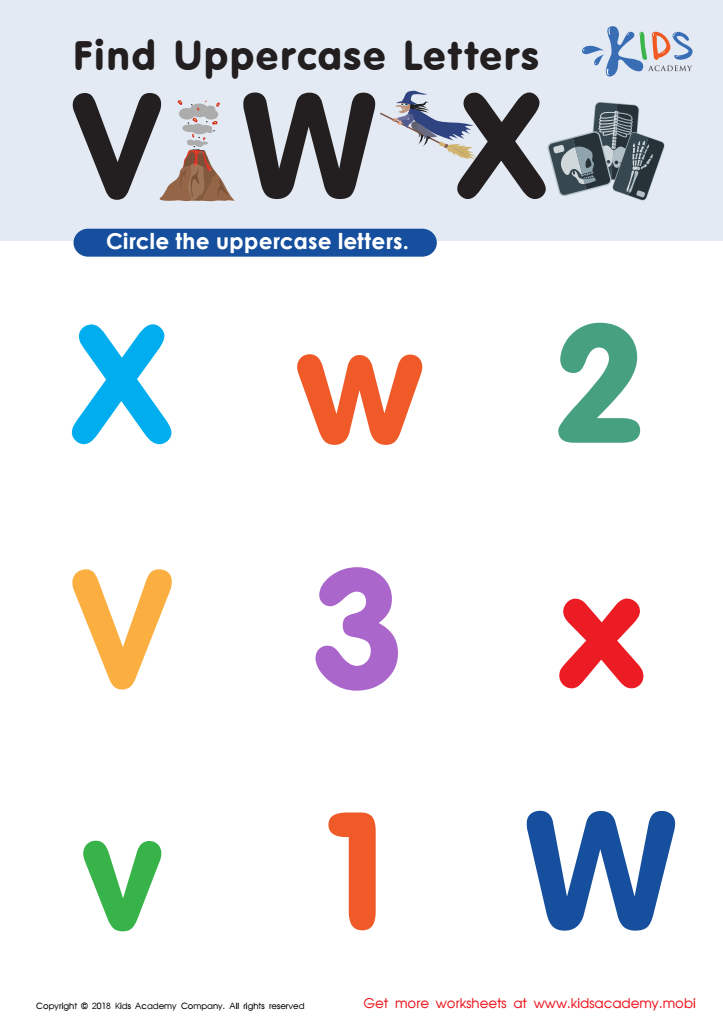

Find Uppercase Letters V, W, X Worksheet
Visual discrimination of normal uppercase and lowercase letters is crucial for 4-year-olds and should be a priority for both parents and teachers. At this age, children are at a critical developmental stage where they are beginning to recognize and differentiate between various shapes and symbols. This skill is foundational for early literacy development.
Understanding and distinguishing between uppercase and lowercase letters promotes more accurate reading and writing abilities. If children can’t discriminate between letter shapes, they may struggle with recognizing letter forms in words, leading to reading difficulties. For instance, confusing 'b' with 'd' or 'P' with 'p' can hinder their ability to decode words accurately.
Moreover, visual discrimination is linked to cognitive development. It helps enhance attention to detail, concentration, and memory, all of which are essential for academic success. By nurturing these skills early on, parents and teachers enable children to develop a strong basis for phonological awareness, which is the ability to hear, identify, and manipulate sounds, another critical component of reading proficiency.
Additionally, early competence in letter recognition supports children’s confidence in reading and writing, fostering a positive attitude toward learning. Making visual discrimination engaging and fun ensures children are on the right path to becoming proficient readers and effective learners, setting the stage for long-term educational achievements.
 Assign to My Students
Assign to My Students







